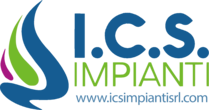Scrum is an agile framework that enables teams to complete smaller chunks of work gradually (rather than working on a large chunk of labor continuously) to ship a working product. Agile methodologies are designed to assist product groups embrace the values and ideas outlined within the Agile Manifesto, including adaptability and dedication to continuous improvement. From user-friendly Kanban boards and easily trackable duties to easy priority-setting options https://www.educationscapes.us/page/39/ and collaboration tools, ClickUp has it all!
How To Use The Three Scrum Pillars For Product Improvement
The difference between Kanban and Scrumban is that the previous fully embraces continuous flow, whereas the latter nonetheless uses iterations. As Scrumban aims to move a Scrum staff to Kanban, both approaches are appropriate for longer-term projects that require ongoing upkeep. Unlike Scrumban, where teams nonetheless have a predefined process (ceremonies, roles), Kanban offers an entirely tailored approach. This enables teams to evolve (not revolutionize) their current work administration methods and obtain organizational agility.
- Next, teams commit to the work that could probably be completed by the end of the iteration and place it in a Sprint Backlog.
- Plus, we’ll introduce you to a helpful visual administration software program that will assist you implement Scrumban rules effortlessly.
- It permits groups to have the agility of Scrum and the simplicity of Kanban whereas requiring no function updates and being straightforward to undertake.
- Setting your WIP limit assures you of a continuing workflow coupled with a visible Scrumban board.
- Monday.com can be very helpful in implementing the Scrumban methodology.
Scrum Master Vs Project Manager: What’s The Difference?
For instance, every team member might be restricted to 1 “work-in-progress” task at a time. This must be finished and moved into the “Done” column on the board earlier than they can progress to the subsequent task. If the team agrees, they may additionally embody limits on the variety of items on the board’s “To Do” list. Meanwhile, teams profit from the visual side of Kanban boards (in this case, Scrumban boards), which allow them to prioritize and monitor the progress of tasks in real-time. As we already talked about, in Scrumban duties aren’t assigned to the group members by a team leader or a project manager. Each group member chooses alone which task from the To-Do part to work on and complete subsequent.
Order Group Priorities On The Scrumban Board
Project administration is a vital step in guaranteeing the success of a project or process. When the staff is ready to start engaged on the plans, these are turned into achievable duties and placed in the 3-month bucket. During the on-demand planning meetings above, the staff takes duties from this bucket. Scrumban allows on-demand planning, so when a group must work on a certain set of duties in the iteration, it begins pulling duties from the Ready record. Planning meetings are scheduled primarily based on when that record is depleted, which depends on how briskly the team finishes the current set of duties. Initially, it was developed by Corey Ladas, a Lean-Kanban practitioner, to help teams transition between these frameworks.
Ai For Project, Useful Resource & Capacity Planning
Ryan Lee talks about tips on how to concentrate on constructing your background, personal brand, and track document of success. If you’ve made it this far in your evolution, you will in all probability notice that the original mechanisms of Scrum are now not doing a lot for you. Scrum is often a helpful scaffold to hold a group collectively whilst you erect a more optimized solution in place. At some level you can slough off the cocoon and permit the pull system to unfold its wings and take flight. Some of the most effective Kanban software you’ll find a way to strive include Monday.com, ClickUp, Wrike, nTask Board, and Celoxis.
Benefit #4: Scrumban Allows Long-term Planning
When moving duties from the “backlog” part to the “WIP” section, they know which duties to choose. Where a WIP limit is set, they easily know which duties make it into that section. Progress is definitely tracked this fashion, so the board and team members don’t turn into overwhelmed by numerous columns.
Set a reasonable maximum limit to forestall your workers from feeling overworked and agitated. Overall, then, Scrumban is a superb methodology for teams looking for an agile, adaptive, and cost-effective approach to product improvement. Much like Kanban, Scrumban focuses on steady enchancment, making certain teams are always looking for new ways to make their product and processes better. With fewer rules to comply with, product managers can choose which features of Scrum to include in the framework. This means it doesn’t endure from overly prescriptive processes, deadlines, or pointless meetings.
The staff makes use of a Kanban board andcards to level out the status of the project. The tasks are grouped primarily based on the stage they are at in the course of. These stages could be named ‘To start’, ‘Work in progress’, ‘Completed’, etc. based on the team and the project. In scrum, the product group works on an outlined set of duties in a time-boxed occasion referred to as sprints. At the end of the sprint, stakeholders review the work completed and offer suggestions to those constructing the product.
Team members have interaction in additional collaborative efforts in making changes to the board as progress within your iterations and the whole project grows. Scrumban boards are made up of three main sections through which completely different columns are moved. The goal of a Scrumban board is to make sure clear visibility, so you attempt not to embrace so many columns that the board becomes troublesome to view or overwhelming.
Also, instead of assigning tasks, group members are allowed to determine on their own duties. Before each dash, the staff holds a dash assembly to determine what tasks to take up subsequent and how to divide the work. Also, before each day’s work starts, the team meets for a small standup to discuss the tasks. Also, for teams moving from scrum to Kanban, Scrumban can act as an middleman. But, this new technique is not as popular as the other two strategies which most agile practitioners know of.





